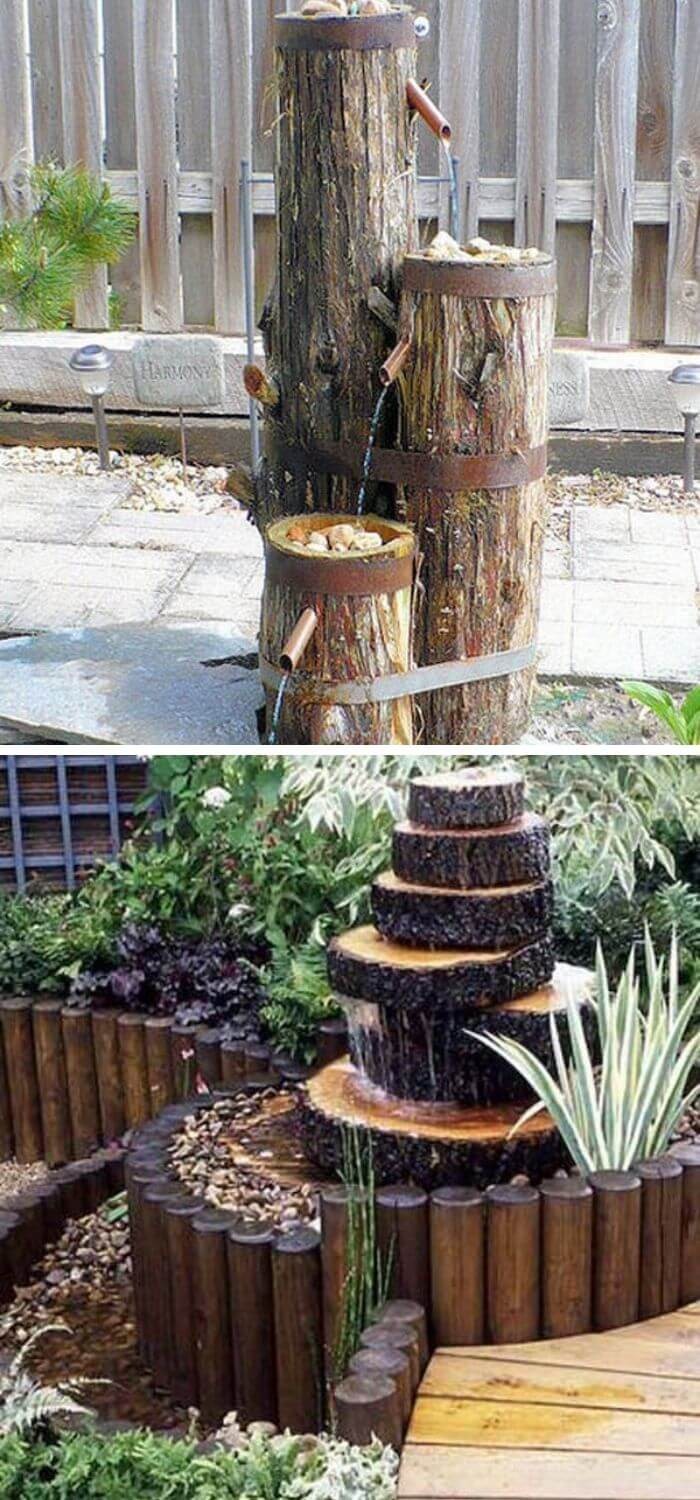26 Types Of Sage Plants For Your Garden: From Culinary To Medicinal Uses
Sage is a versatile plant that goes beyond its culinary uses. It’s also a valuable addition to your garden, offering a range of benefits and varieties. With 26 distinct types of sage plants, each with its unique characteristics and uses, this article aims to explore the world of sage in more depth. Whether you’re looking for a medicinal herb or simply want to add some visual appeal to your outdoor space, sage has something to offer.
As we delve into the different types of sage, you’ll discover that there’s more to this plant than its aromatic flavor. From smudging and meditation to cooking and decoration, sage is a plant that can be incorporated into various aspects of life. With so many varieties to choose from, you’re sure to find one that suits your needs and interests.
What is a sage plant?
Among the many wonders of the botanical world, a type of aromatic herb known as sage stands out for its remarkable diversity. The Lamiaceae family is home to numerous species of sage, each boasting unique characteristics and applications. While culinary sage (Salvia officinalis) may be the most widely recognized variety, there are also medicinal, ornamental, and other types of sage plants that offer a range of benefits and uses.
How Many Types of Sage are There?
While sage plants may be most commonly associated with culinary uses, there are actually eleven distinct varieties to discover, each boasting its own unique characteristics. Ranging from ornamental plants that add pops of color to gardens to those with distinctive flavors like licorice-scented German sage, there’s a type of sage to suit every taste and purpose.
What’s more, these hardy plants are remarkably adaptable, thriving in a wide range of climates and requiring relatively little maintenance to keep them healthy and happy. Whether you’re an experienced gardener or just starting out, sages offer a versatile and rewarding addition to any outdoor space.
What kind of sage is good for smudging?
The iconic white sage plant is often considered the gold standard for smudging rituals. Its potent, pungent fragrance is renowned for purifying the air and banishing negative energies. While other types of sage can be used for this purpose, they may not boast the same level of potency as the revered white sage.
What sage smells the best?
Among the various types of sage, one commonality stands out: each exhibits a distinct fragrance profile. Some enthusiasts swear by the pungent aroma of fresh sage, while others prefer the earthier scent of dried sage. Whether you opt for one or the other, the essence of sage is sure to delight.
Different Types Of Sage Plants (With Pictures)
Anise-Scented Sage (Salvia guaranitica)

With its unique anise-scented leaves, this versatile sage offers a range of benefits for both the kitchen and the medicine cabinet. The strong anise aroma of the leaves makes it a popular choice for seasoning meats, stews, and soups, while its medicinal properties make it an effective treatment for respiratory issues, digestive problems, and other health concerns.
The plant’s long, lance-shaped leaves are covered in fine hairs and have an intense licorice flavor that is sure to delight the senses. When it comes to growing conditions, anise-scented sage thrives in full sun and well-drained soil, making it a low-maintenance addition to any garden. This hardy perennial can be grown from seed or transplanted from starter plants, and its beautiful purple-blue flowers bloom late summer or early fall.
With its adaptability and numerous benefits, anise-scented sage is a great choice for gardeners in USDA zones four through nine, offering a flavorful and fragrant addition to any outdoor space.
Annual Sage (Salvia horminum or Salvia viridis)
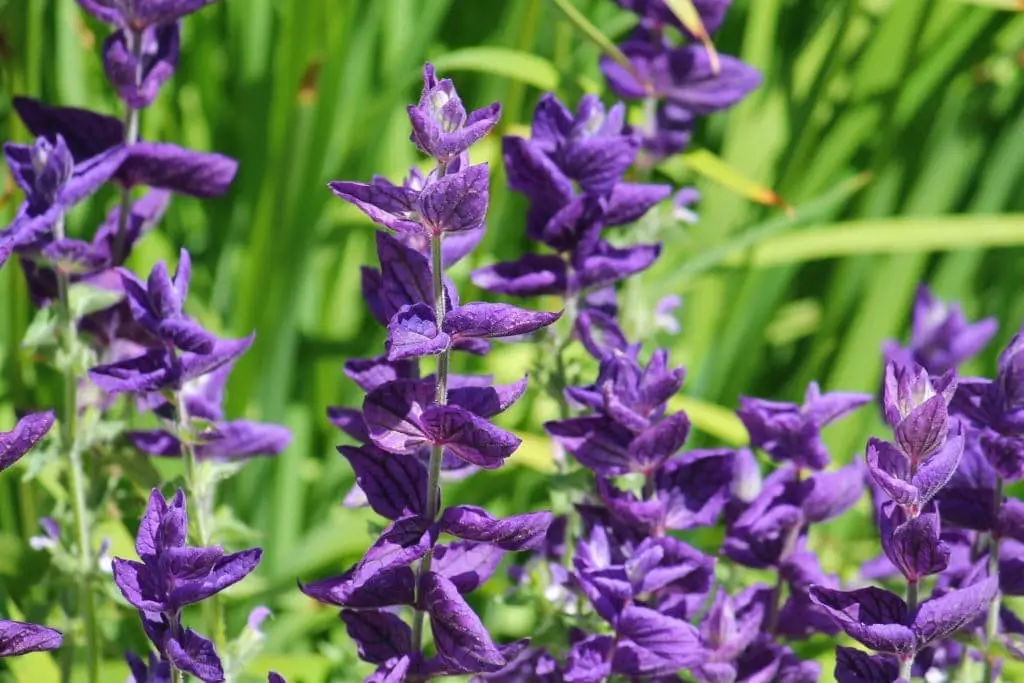
While annual sage is an excellent addition to any herb garden, its unique flavor profile makes it particularly appealing for use in a variety of culinary and medicinal applications. With its bold, lavender-like taste, this hardy annual is a versatile choice for cooks and herbalists alike. To thrive, annual sage requires full sun and well-drained soil conditions. Seed starting or transplanting established plants are both viable options for getting started with this flavorful herb.
Autumn Sage (Salvia greggii)

Autumn Sage is a perennial shrub that stands out from other types of sage plants. Reaching up to three feet in height, it produces vibrant spikes of pink, purple, or white flowers throughout late summer and into fall. Not only are the blooms visually stunning, but the leaves themselves are also edible and can be used to add flavor to salads and various dishes. Furthermore, Autumn Sage has been known to possess medicinal properties, making it a valuable addition to any herb garden.
Its drought tolerance is another significant advantage, allowing it to thrive in USDA zones five through nine. The plant prefers full sun but can adapt to partial shade. To keep Autumn Sage healthy and thriving, plant it in well-drained soil and provide regular watering, especially during the first year after planting. As a non-frost-hardy species, it’s essential to bring the plant indoors if there’s even a slight chance of frost.
If you’re seeking a versatile sage plant that offers both culinary and medicinal uses, Autumn Sage is an excellent choice.
Blackcurrant Sage (Salvia microphylla)
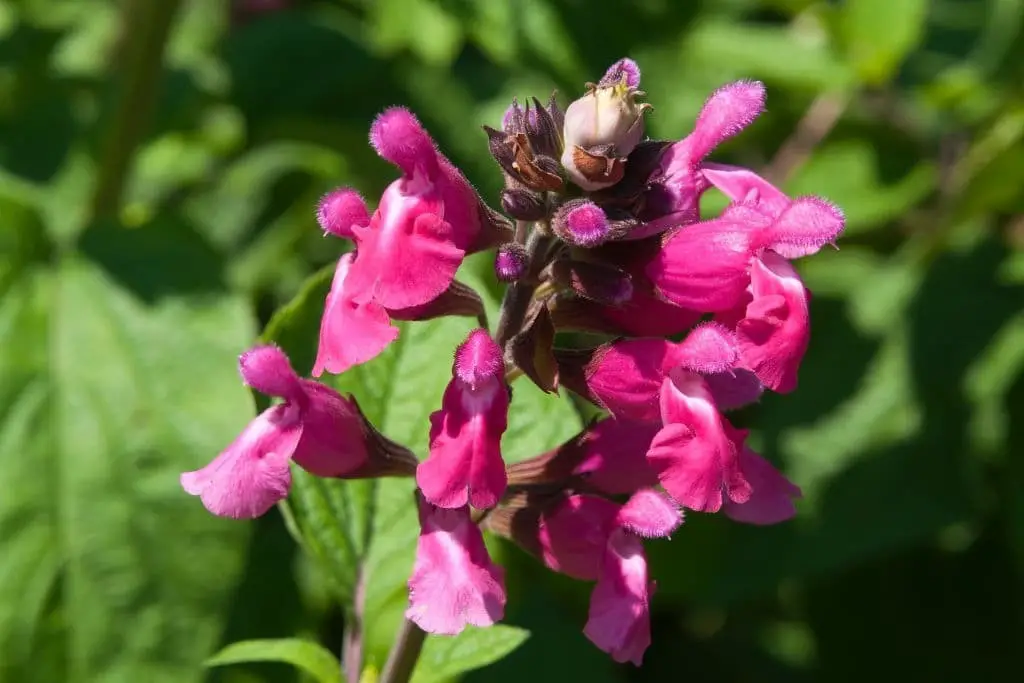
Blackcurrant sage is an outstanding perennial that boasts impressive growth potential, reaching up to three feet in height. Its foliage features gray-green hues with a velvety texture and a striking purple undertone on the undersides. As the seasons transition into late summer and early fall, the plant produces dainty, tubular flowers in a range of pinkish-purple shades. The flavor profile is reminiscent of black currants, making it an asset for both culinary and medicinal pursuits.
One of its most attractive features is its adaptability to dry conditions and relative immunity to pests, making it an excellent addition to the herb garden. The leaves can be dried or used fresh in teas, tinctures, salves, salads, and other dishes. Moreover, the flowers can also be dried for use as a culinary herb.
Beyond its practical uses, blackcurrant sage is valued for its medicinal properties, including the treatment of colds and flu, soothing sore throats, and alleviating digestive issues. If you’re seeking a hardy sage plant with diverse applications, blackcurrant sage is an excellent choice.
Clary Sage (Salvia sclarea)

Clary sage is an herb that exhibits biennial or perennial growth patterns, reaching heights of up to five feet. Its leaves are ovate in shape, measuring around three inches in length, with a distinctive hairy underside. The flowers are large and tubular, presenting a kaleidoscope of colors including blue, purple, pink, and white. When consumed, clary sage imparts a unique flavor profile that harmoniously blends the essence of sage and citrus.
This versatile herb is utilized not only in culinary preparations but also in medicinal applications. The edible leaves of clary sage can be incorporated into salads, soups, or stews, while the flowers add a pop of color to salad presentations. Notably, clary sage is a rich source of vitamins A and C.
Beyond its gastronomic uses, clary sage has a storied history in traditional medicine, having been employed to address an array of health concerns including eye infections, menstrual cramps, anxiety, and headaches. Furthermore, the oil extracted from this herb is utilized in aromatherapy for its therapeutic benefits.
Cleveland Sage (Salvia clevelandii)

Cleveland sage, a stunning and resilient plant, offers a multitude of uses in the garden. Its aromatic foliage excels as a culinary herb, infusing dishes like chicken or fish with its unique flavor profile. The flowers, too, are edible and can be incorporated into salads or sweet treats. Furthermore, Cleveland sage is an excellent selection for a medicinal herb garden. By utilizing the leaves to brew a soothing tea, individuals may find relief from respiratory issues.
Desert Sage (Salvia dorrii)
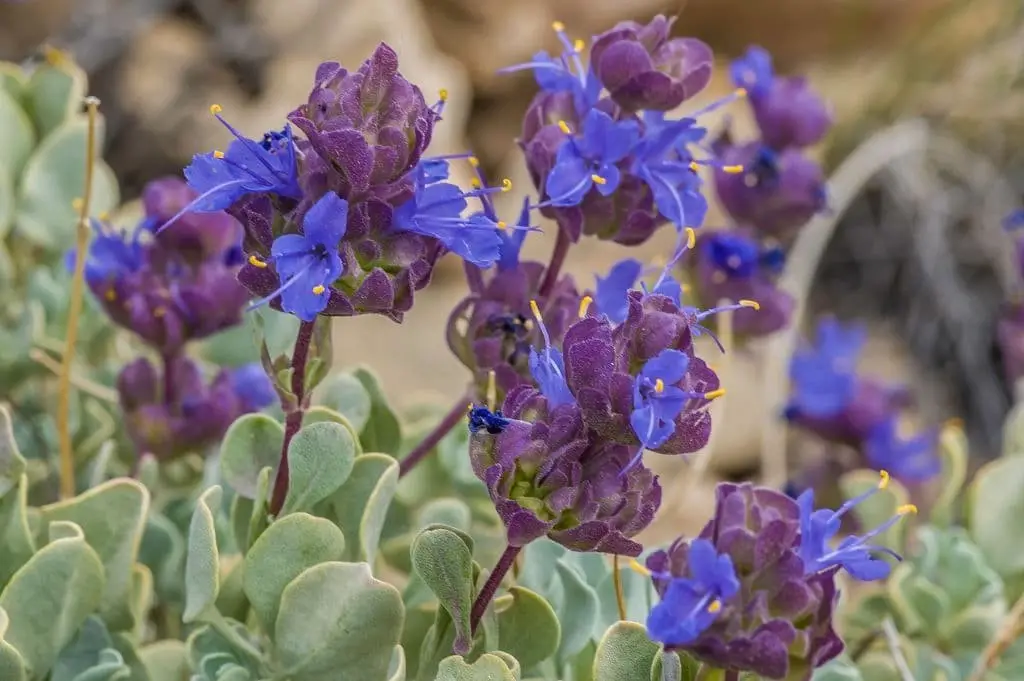
Desert Sage (Salvia dorrii) is a resilient plant that thrives in arid environments, its robust growth habit reaching up to three feet tall. The striking feature of this sage is the vibrant purple hue of its flowers and leaves, which emit a refreshing minty aroma when crushed. In optimal conditions, Desert Sage requires full sun and well-draining sandy soils.
This adaptability has led to its versatile uses, including infusing teas, adding depth to sauces and dressings, and even harnessing its medicinal properties to alleviate respiratory issues and support overall detoxification.
Fruit Sage/Fruit-scented sage (Salvia dorisiana)
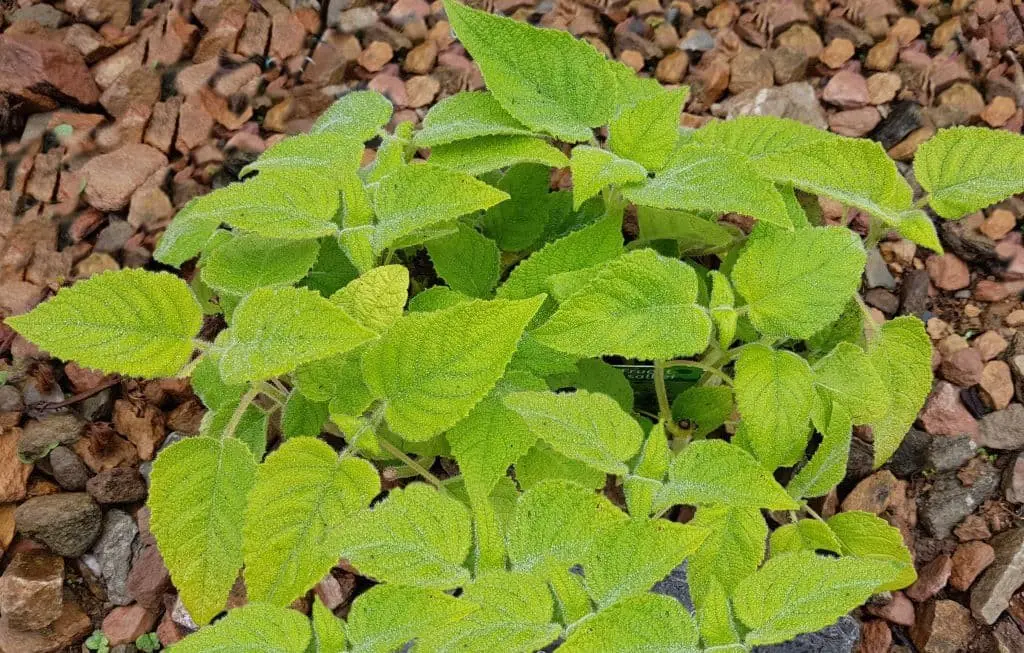
Fruit sage, a culinary delight, boasts a fruity aroma that’s hard to resist. The plant’s gray-green leaves are ovate with serrated edges, measuring about 18 inches tall. Its delicate light purple flowers add a pop of color when it blooms. While this versatile herb can be used fresh in salads, dressings, and sauces, its uses extend beyond the kitchen – it can also be dried and incorporated into herb blends.
Whether you’re a seasoned cook or just starting to explore the world of herbs, fruit sage is an accessible and hardy option, thriving in zones five through nine.
Common Garden Sage (Salvia officinalis)
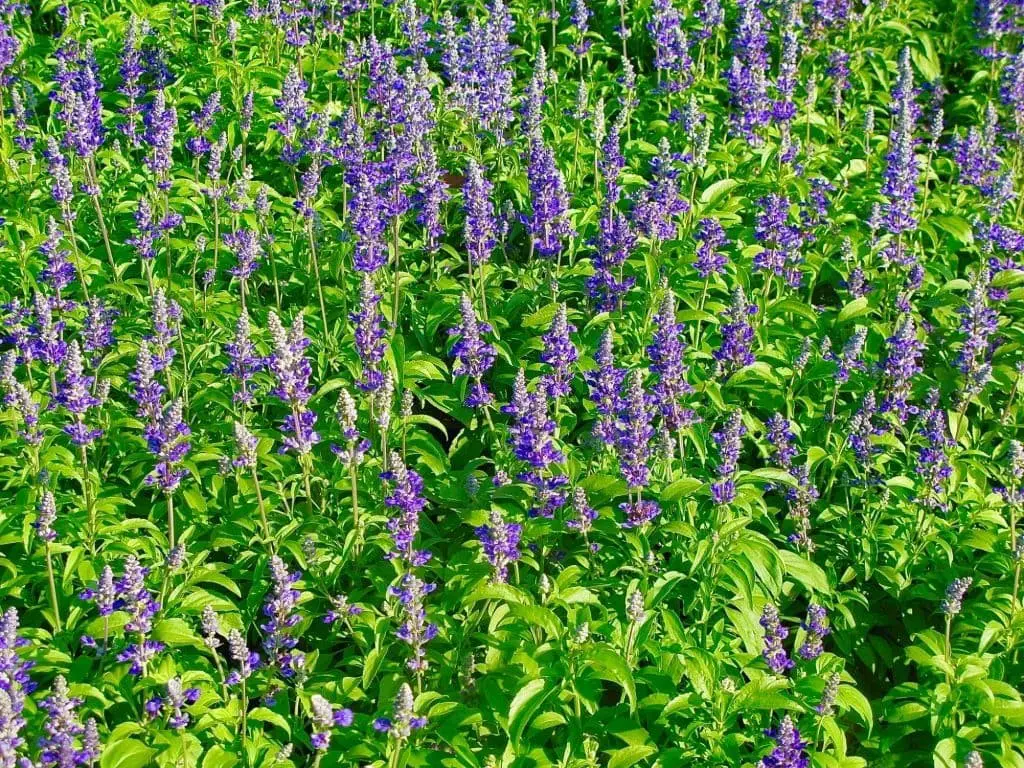
Common Garden Sage (Salvia officinalis) is a versatile herb that thrives in most gardens, boasting gray-green leaves and striking blue flowers. The aromatic foliage is a popular addition to various dishes, while its essential oil is often employed in aromatherapy practices. Beyond its culinary and therapeutic applications, Sage has also been recognized for its potential health benefits.
Research suggests that it may enhance memory recall, support respiratory well-being, and alleviate digestive issues.
Graham’s Sage (Grahamii sage)
Graham’s sage, named after Dr. James Graham, boasts a unique blend of characteristics that set it apart from its fellow sages. Its silver-gray leaves are a distinguishing feature, growing up to three feet tall as the plant reaches maturity. The real showstopper, however, is the blooming process, which typically occurs in late summer or early fall. Small, delicate purple flowers emerge, not only adding a pop of color but also providing a culinary delight.
These edible blooms can be incorporated into salads, used as a garnish, or even add a burst of flavor to various dishes. Graham’s sage is renowned for its minty, peppery taste, making it an attractive addition to many recipes. But its uses extend far beyond the kitchen. This versatile herb has been utilized for centuries in traditional medicine to alleviate symptoms associated with coughs, colds, and other respiratory issues.
Grape-Scented Sage (Salvia melissordora)
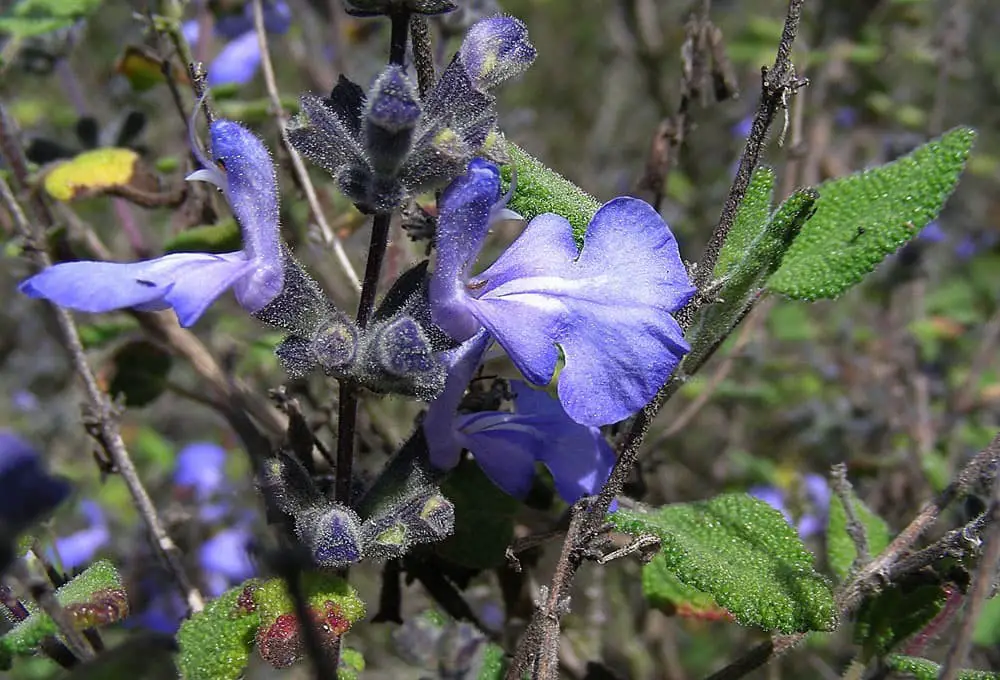
Grape-scented sage is a highly versatile and aromatic herb that excels in both culinary and medicinal applications. The leaves boast a distinct grape-like fragrance and flavor, rendering them an excellent choice for adding depth to salads, teas, and various dishes. Beyond its gastronomic uses, this herb has been revered throughout history for its multifaceted benefits.
In traditional medicine, it is believed to possess properties that can aid in alleviating respiratory issues, headaches, and other common ailments.
For those seeking a low-maintenance yet rewarding addition to their garden, grape-scented sage is an exemplary option. Its ease of cultivation and care makes it an ideal choice for even the most novice of gardeners.
Furthermore, this herb’s numerous advantages extend beyond its medicinal properties, also enriching one’s living space with its visually appealing foliage. Considering these benefits, it’s a wonder why more people haven’t yet discovered the wonders of grape-scented sage.
Greek Sage (Salvia fruticosa)
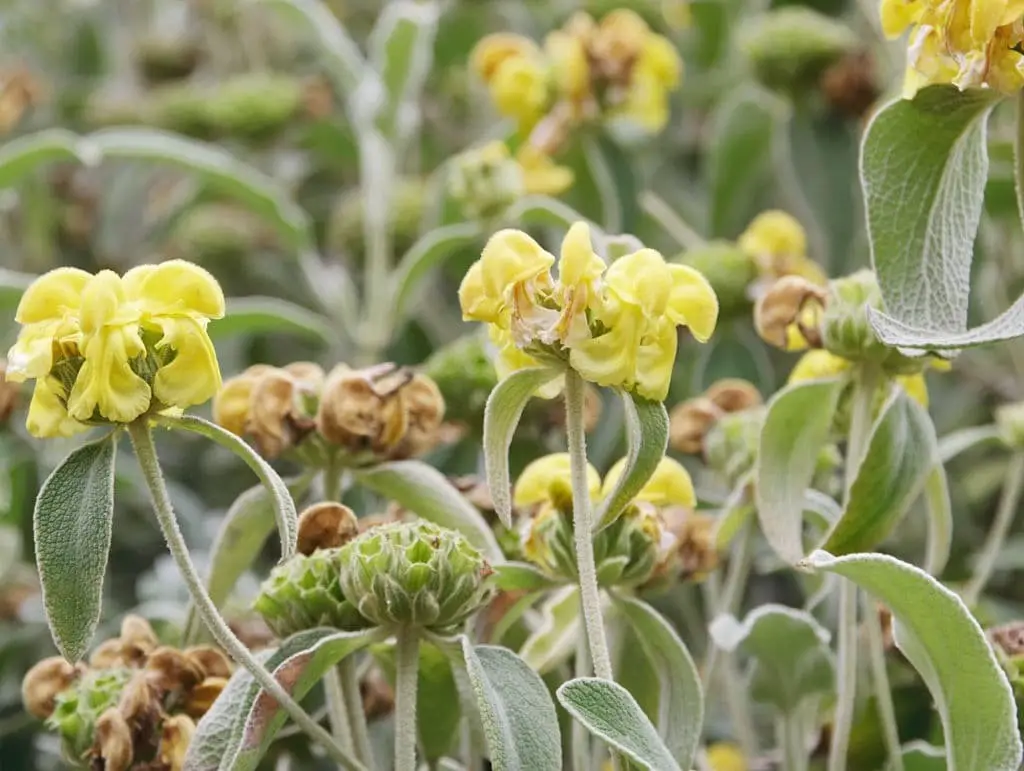
Native to the Mediterranean region, Greek sage is a versatile herb that offers both culinary and medicinal uses. Its leaves are a popular ingredient in tea blends, prized not only for their distinctive flavor but also for the potential health benefits they provide. This versatile herb has been used as a natural remedy for anxiety and other mood disorders, offering a holistic approach to promoting emotional well-being.
Greek sage is characterized by its compact growth habit, reaching heights of up to three feet, and featuring small, delicate purple flowers that add a pop of color to any garden setting.
Hummingbird Sage (Salvia spathacea)

In the southwestern United States, hummingbird sage (Salvia spathacea) thrives in California and Arizona’s wild landscapes. This versatile perennial shrub stands at 2-3 feet tall, boasting vibrant lavender flowers that attract hummingbirds. Beyond its striking appearance, hummingbird sage offers a range of practical uses. In cooking, it adds flavor to salads or can be used as a seasoning for fish or poultry dishes.
The leaves can also be dried and brewed into an herbal tea believed to promote relaxation and calm the mind. Historically, this plant has been employed to treat various ailments, including fever, inflammation, and even cancer. With its many benefits, hummingbird sage is an excellent choice for any garden seeking a low-maintenance yet high-reward addition. Its showy blooms will attract both humans and wildlife, making it a perfect blend of form and function.
Mealy Cup Sage (Salvia farinacea)
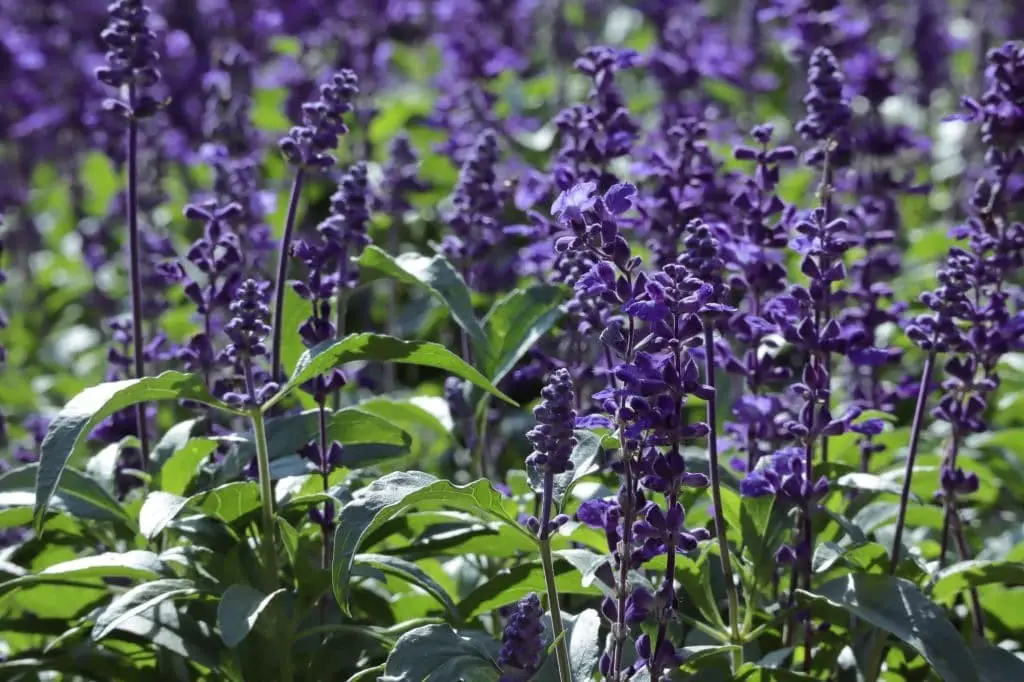
Mealy Cup Sage is a versatile and resilient perennial that boasts both culinary and medicinal applications. Its leaves, adorned with a fine white wax coating, display a subtle minty and peppery flavor profile, making them suitable for incorporation into salads, pestos, or various dishes. The plant’s purple or blue flowers are also edible and can be added to salads or desserts, providing an extra layer of visual appeal.
Beyond its gastronomic uses, Mealy Cup Sage is prized for its medicinal properties. As a natural antiseptic, it can be employed to treat wounds, skin infections, and other afflictions. The plant’s essential oil, rich in anti-inflammatory compounds, offers relief from muscle pain, arthritis-related discomfort, and other joint pains.
For gardeners seeking a hardy and adaptable perennial that doubles as both a flavorful addition to recipes and a natural remedy for various health concerns, Mealy Cup Sage is an excellent choice. Its ability to thrive in most climates ensures its suitability for a wide range of environments.
Mexican Bush Sage (Salvia leucantha)

With its vibrant purple blooms, Mexican bush sage is a stunning addition to any outdoor space. This low-maintenance variety thrives in dry conditions, making it an ideal choice for beginners. Its numerous uses extend beyond the realm of gardening, as the plant’s leaves can be utilized to infuse dishes with flavor, while also serving as a calming tea to soothe the mind.
Moreover, Mexican bush sage boasts medicinal properties that can help alleviate issues such as headaches, anxiety, and digestive problems. For those seeking an attractive and versatile sage plant for their garden, Mexican bush sage is a standout selection.
Mexican Chia (Salvia hispanica)
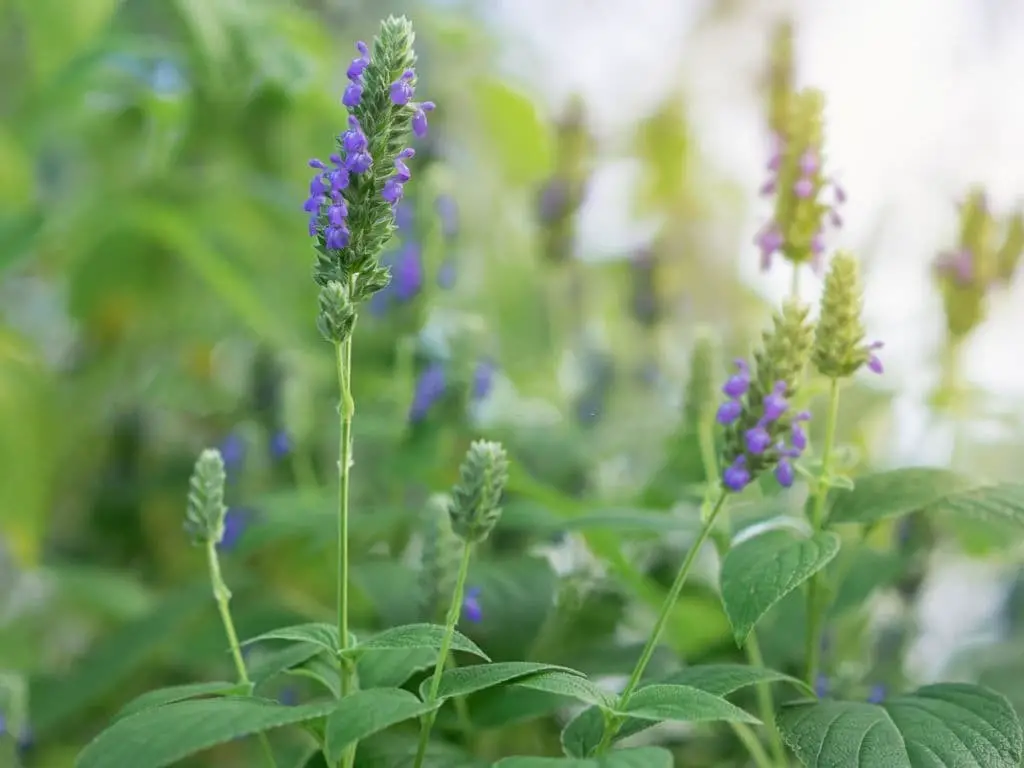
Mexican chia, a type of sage plant, boasts a plethora of culinary and medicinal applications. The leaves can be consumed fresh or dried, while the seeds can be ground into a flour or incorporated into drinks and smoothies for added nutritional value.
Packed with omega-3 fatty acids, antioxidants, protein, and fiber, Mexican chia offers a multitude of health benefits, including improved digestion, regulated blood sugar levels, increased energy, anti-inflammatory properties, and a reduced risk of chronic diseases.
Pineapple Sage (Salvia elegans)
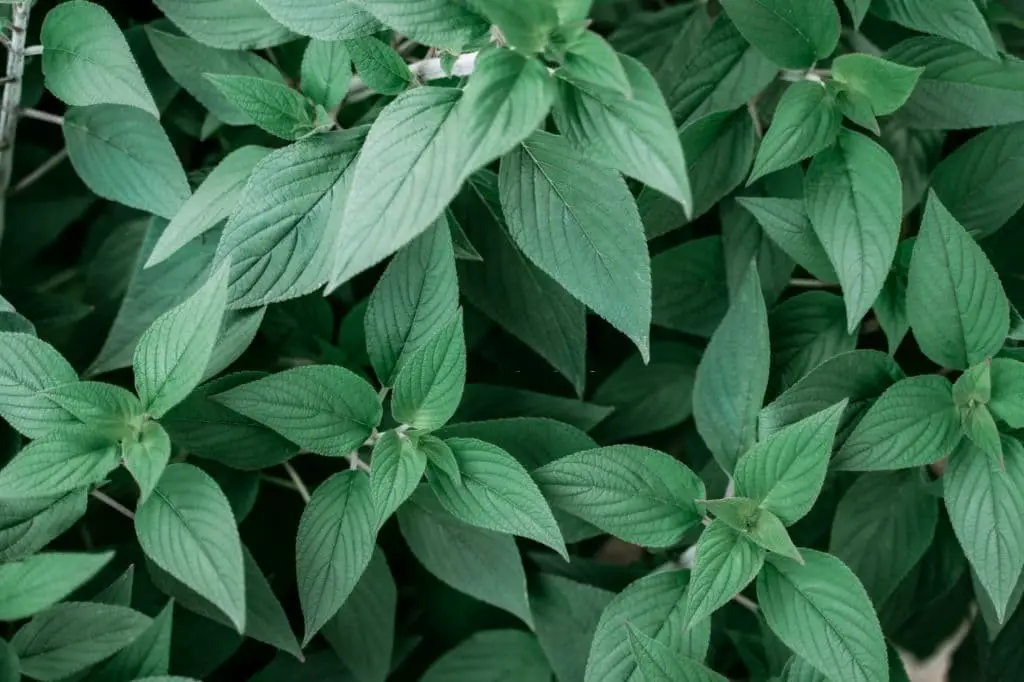
Pineapple sage (Salvia elegans) boasts a unique combination of culinary, medicinal, and ornamental uses. The leaves are prized for their flavor-enhancing properties in cooking, while the flowers can be crafted into a soothing tea believed to alleviate respiratory issues. Furthermore, this versatile plant is rich in antioxidants, which may aid in protecting the body from cellular damage. Notably, pineapple sage is remarkably drought-tolerant and thrives in USDA zones seven through eleven.
Visually striking, pineapple sage presents stunning red flowers and vibrant green leaves, making it a sought-after addition to any garden or container. Its beauty extends beyond aesthetics, as it also attracts butterflies and hummingbirds. With its low-maintenance requirements and tolerance for hot weather conditions, pineapple sage is an ideal choice for gardeners of all skill levels.
Pitcher Sage (Salvia azurea)
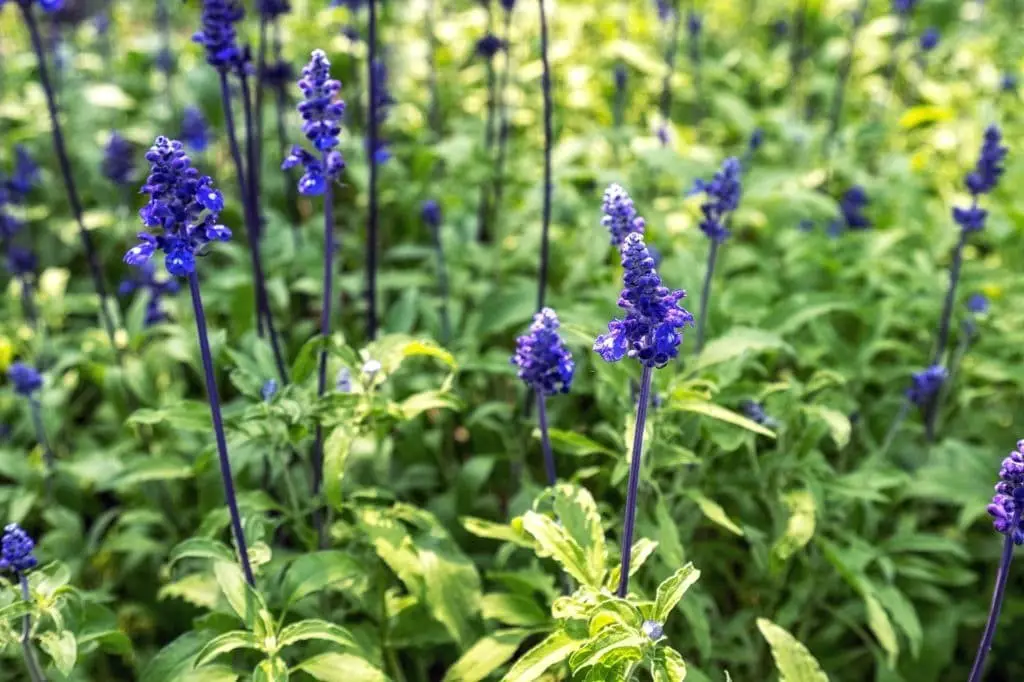
Pitcher sage is a stunning addition to any garden, offering a vibrant display of blue flowers growing in tall spikes. The leaves, with their striking deep green color and silver markings, add an extra layer of visual appeal. But beyond its aesthetic charm, pitcher sage also boasts a wealth of practical applications.
Its culinary uses are particularly noteworthy, as the leaves possess a mild flavor that can be used fresh or dried, making them perfect for adding to salads, stir-fries, and other dishes. The flowers, with their sweet taste, are equally versatile, lending themselves well to sweet treats and refreshing drinks. Furthermore, pitcher sage’s medicinal properties make it an excellent choice for addressing various health concerns, including headaches, anxiety, and nausea.
Its versatility and numerous benefits make it a fantastic all-around plant to cultivate in your garden.
Prawn Sage (Salvia haenkei)
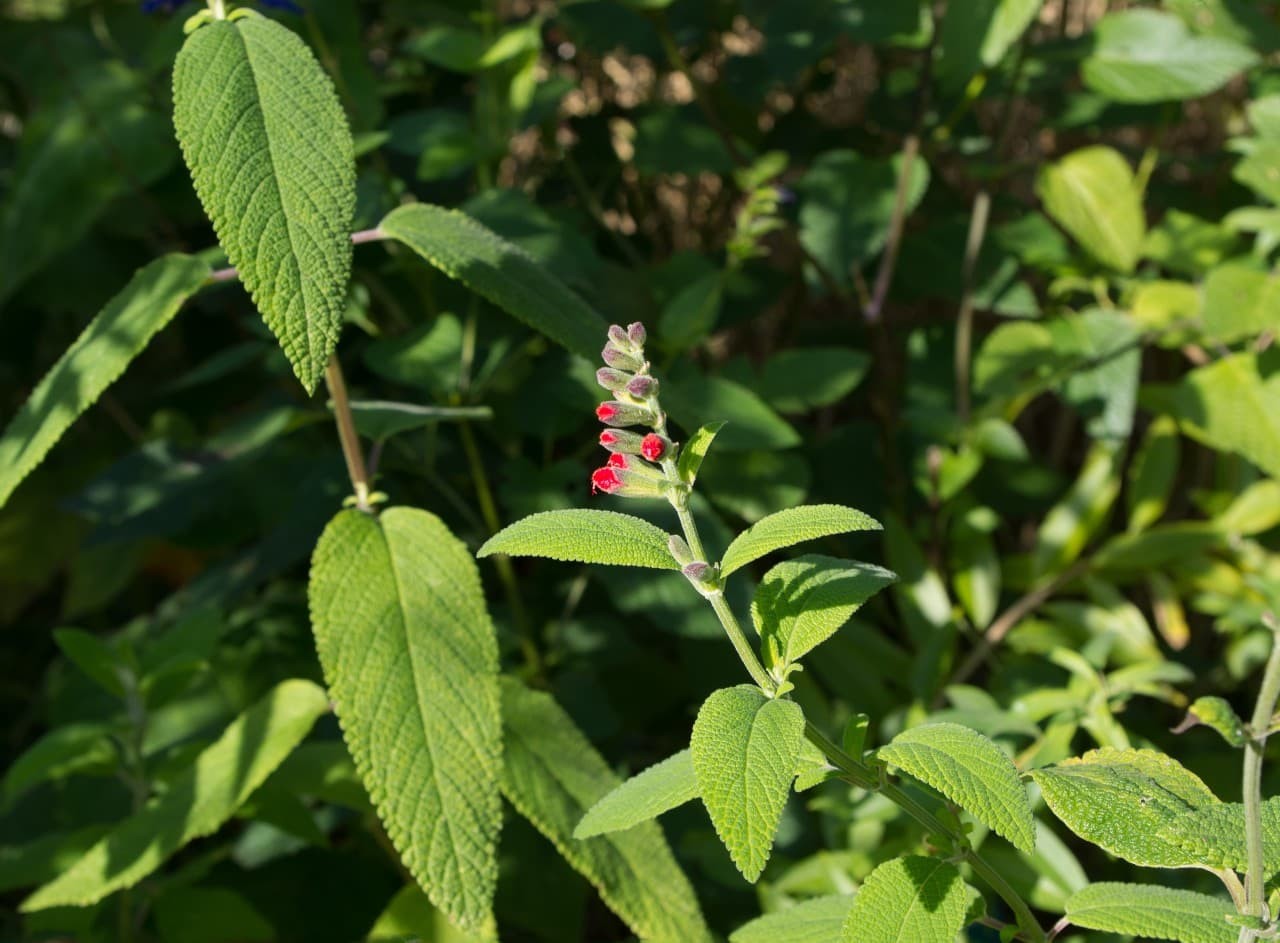
Prawn sage is a perennial shrub that boasts impressive growth potential, reaching up to three feet in height. Its silvery green and fuzzy leaves are uniquely characterized by an inch-long, purple stalk. This remarkable herb blooms from late spring to early summer, producing spikes of light lavender flowers that exude a sweet fragrance. The flavor profile of prawn sage is robust, with subtle undertones of peppermint that add depth and complexity to any dish.
As a culinary staple, prawn sage leaves can be used in a variety of dishes, including salads, soups, and stews. The edible flowers also make a stunning garnish for any meal, adding a pop of color and freshness. Furthermore, prawn sage has been utilized for its medicinal properties, with the leaves capable of treating coughs, colds, and other respiratory ailments. The flowers can be used to alleviate headaches and other forms of pain.
For those seeking a reliable culinary or medicinal sage plant, prawn sage is an excellent choice. Its hardiness in zones six through nine, combined with its ability to thrive in both full sun and partial shade, makes it an adaptable addition to any garden. Additionally, prawn sage is remarkably drought-tolerant once established, ensuring that it remains a low-maintenance yet rewarding option for plant enthusiasts.
Salvia Van Houttei
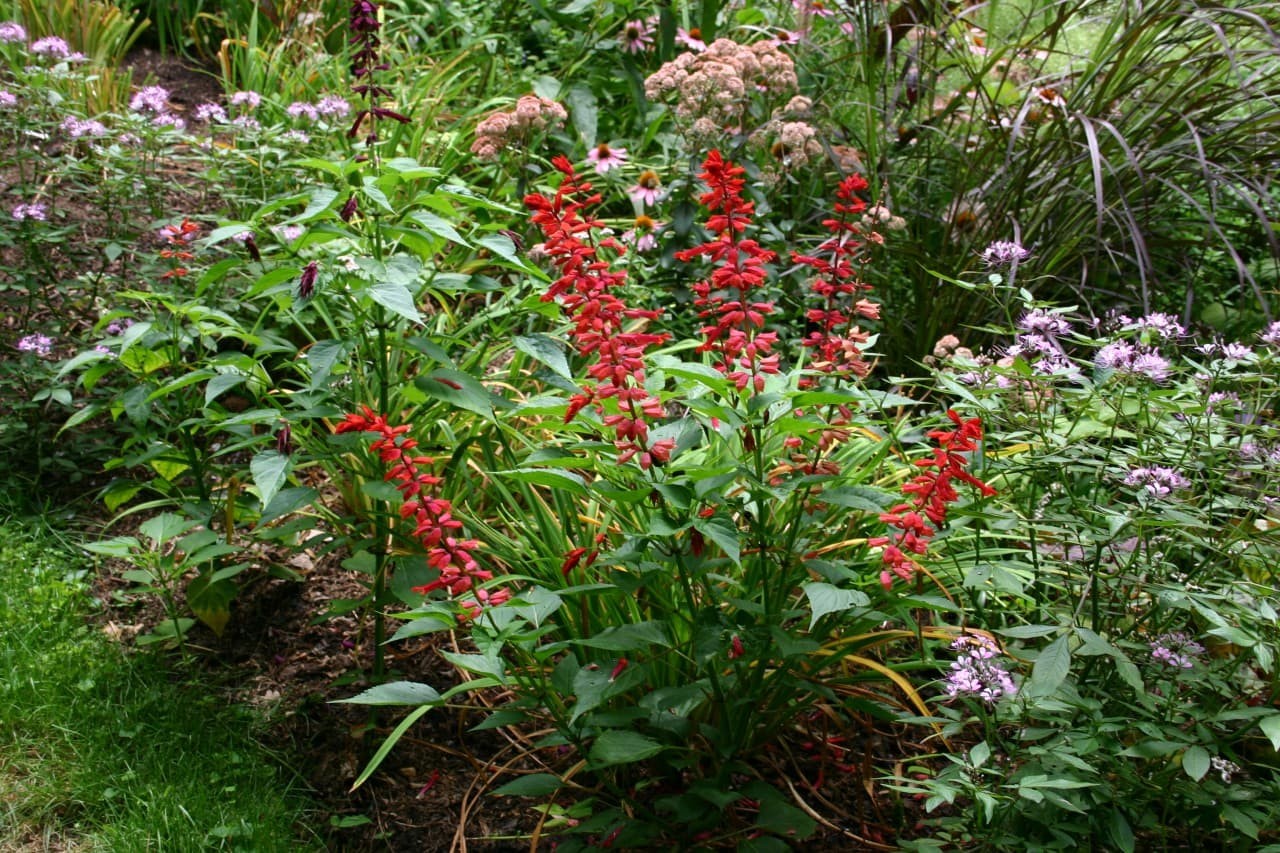
Salvia Van Houttei, a type of sage, is prized for its versatility in the kitchen as well as its potential health benefits. The plant’s leaves have a slightly bitter taste, making them an excellent addition to salads, pasta dishes, and soups. Furthermore, this variety can be used to create a soothing tea that has been shown to alleviate digestive issues, ease headaches, and even promote relaxation, serving as a natural sleep aid.
For those seeking a single plant that excels in both culinary and medicinal applications, Salvia Van Houttei is an excellent choice.
Scarlet Sage (Salvia splendens)

Scarlet sage is a prized variety of the iconic herb plant, renowned for its vibrant flowers that come in shades of red, pink, and purple. These striking blooms inject a burst of color into any garden setting, making them a popular choice for flower beds and indoor arrangements alike. As an added bonus, scarlet sage is a haven for pollinators like bees and butterflies, making it an excellent option for wildlife-friendly gardens.
As a perennial plant, scarlet sage thrives in zones nine through eleven, and can be propagated via seed or division. It prefers full sun but can tolerate light shade, with regular watering – especially during the summer months – being crucial to its well-being. A monthly dose of all-purpose fertilizer also keeps it happy and healthy. Beyond its ornamental appeal, scarlet sage is a versatile culinary herb, with leaves that can be used in salads, soups, and stews.
The flowers are edible too, adding a pop of color and flavor to any dish. Furthermore, scarlet sage has medicinal properties, making it a valuable asset for treating respiratory issues like bronchitis and asthma, as well as digestive problems and menstrual cramps. For those seeking a low-maintenance yet high-reward addition to their garden, scarlet sage is an excellent choice. Its unique combination of culinary, medicinal, and ornamental uses make it a standout variety that’s sure to delight.
Sonoma Sage (Salvia sonomensis)
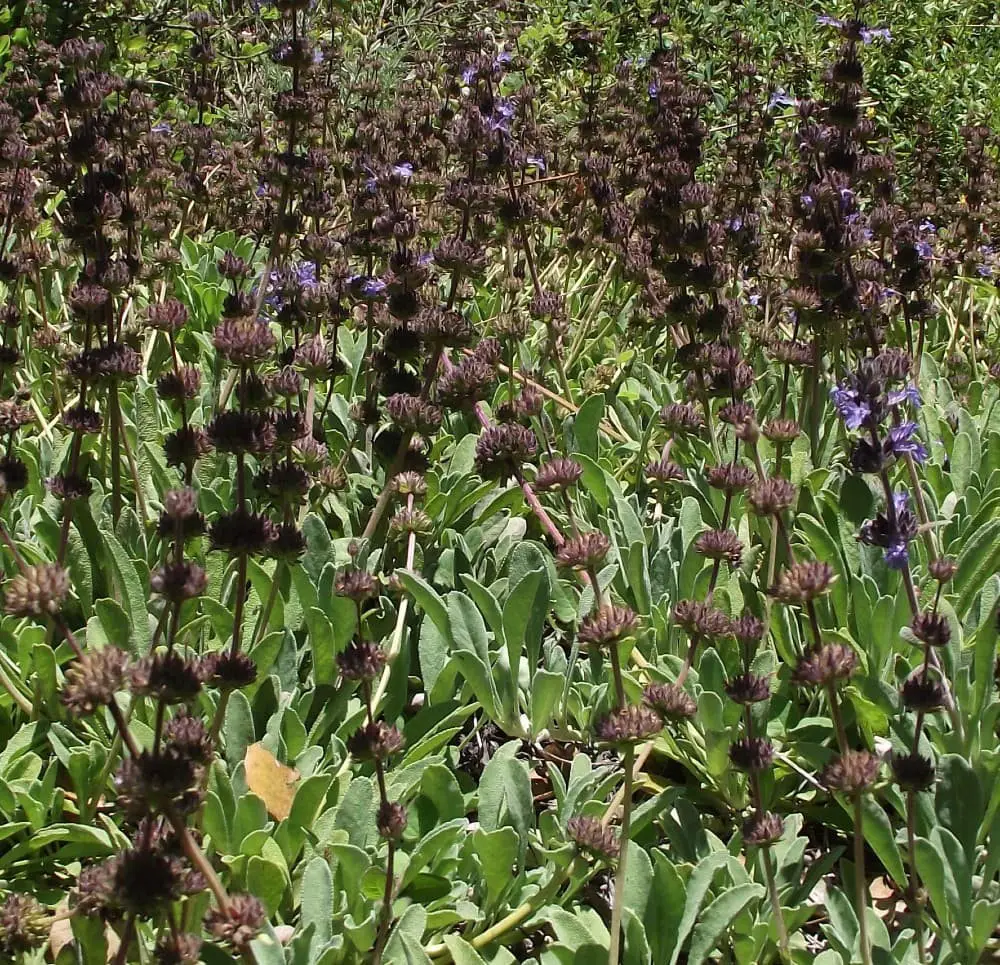
Sonoma sage is a versatile plant that offers both gastronomic and therapeutic benefits. Its leaves boast a robust, herbaceous flavor profile, making them an excellent addition to various recipes or teas. Furthermore, the plant’s medicinal properties render it a valuable asset in addressing respiratory issues, headaches, and other health concerns.
To cultivate sonoma sage effectively, ensure it receives full sun and ample space to mature, as it can reach impressive heights of up to five feet tall.
Purple sage
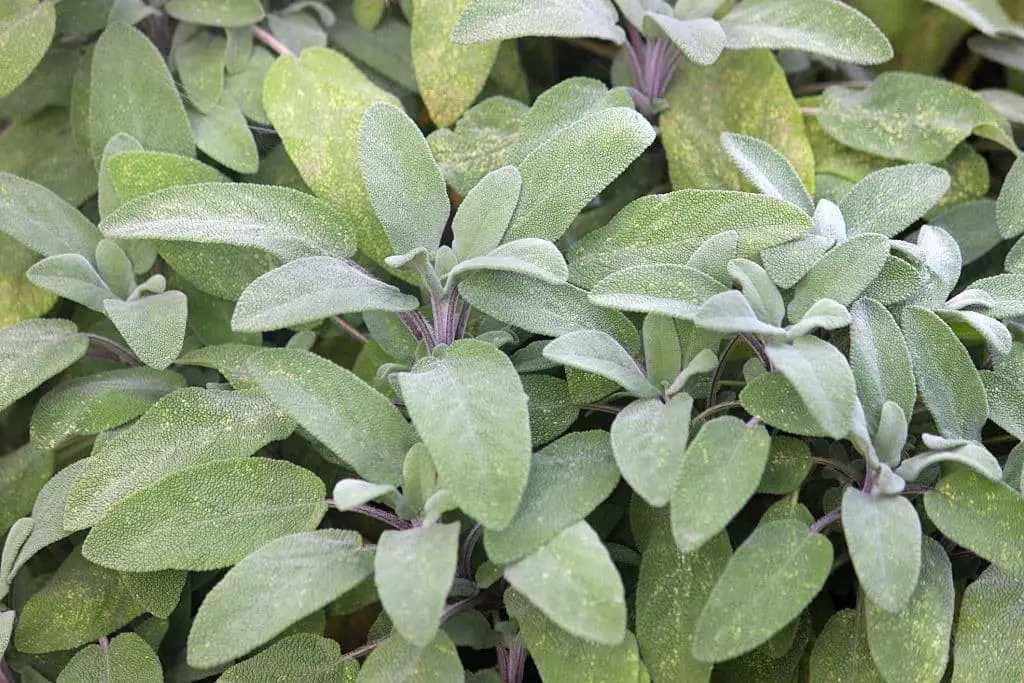
Purple sage (Salvia officinalis ‘Purpurascens’) is another excellent addition to a garden, boasting stunning purplish-blue foliage and vibrant pink flowers in the summer. This culinary variety boasts a robust, minty flavor profile, making it an ideal choice for teas, salads, and various recipes. Furthermore, purple sage also possesses medicinal properties, proving valuable in treating respiratory issues, headaches, and other health concerns.
To cultivate this beauty, plant it in full sun and provide ample space, as it can grow up to five feet tall.
South African Sage
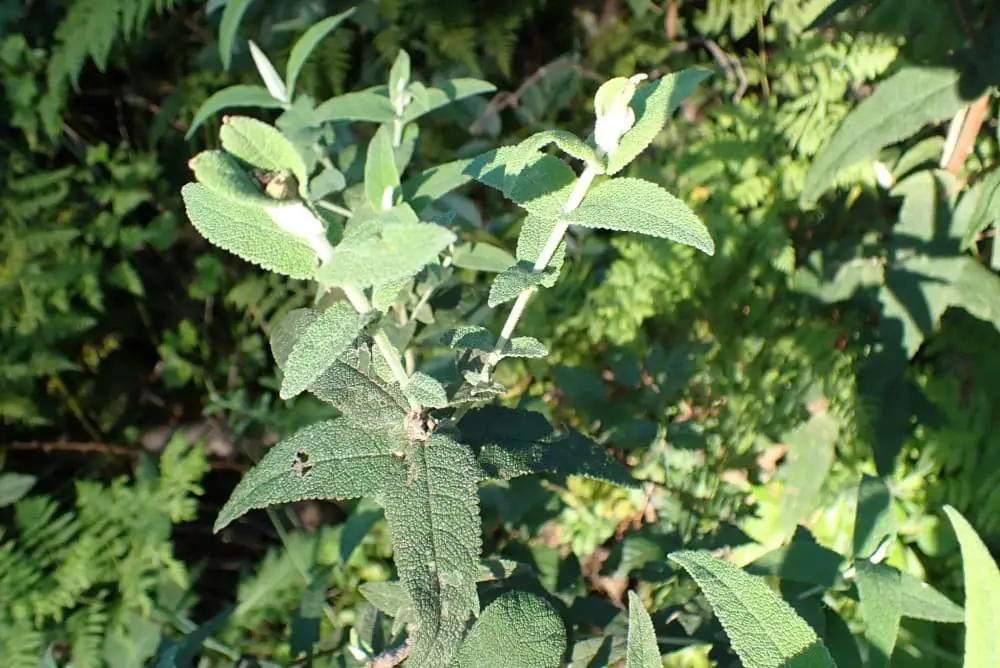
South African sage is a resilient and adaptable perennial that can thrive in challenging conditions. Its slender leaves and vibrant lavender blooms can reach heights of up to three feet, typically blooming in late summer. Beyond its culinary applications, this hardy plant also boasts impressive medicinal properties. The leaves can be used to craft a calming tea or infusion, while the extracted oil has been known to alleviate respiratory issues.
With its low-maintenance requirements and ability to flourish in both full sun and partial shade, South African sage is an attractive addition to any garden. It excels in well-drained soil and exhibits impressive drought tolerance once established, making it a top pick for gardeners seeking a versatile and easy-to-care-for plant that offers dual benefits.
White Sage (Salvia apiana)
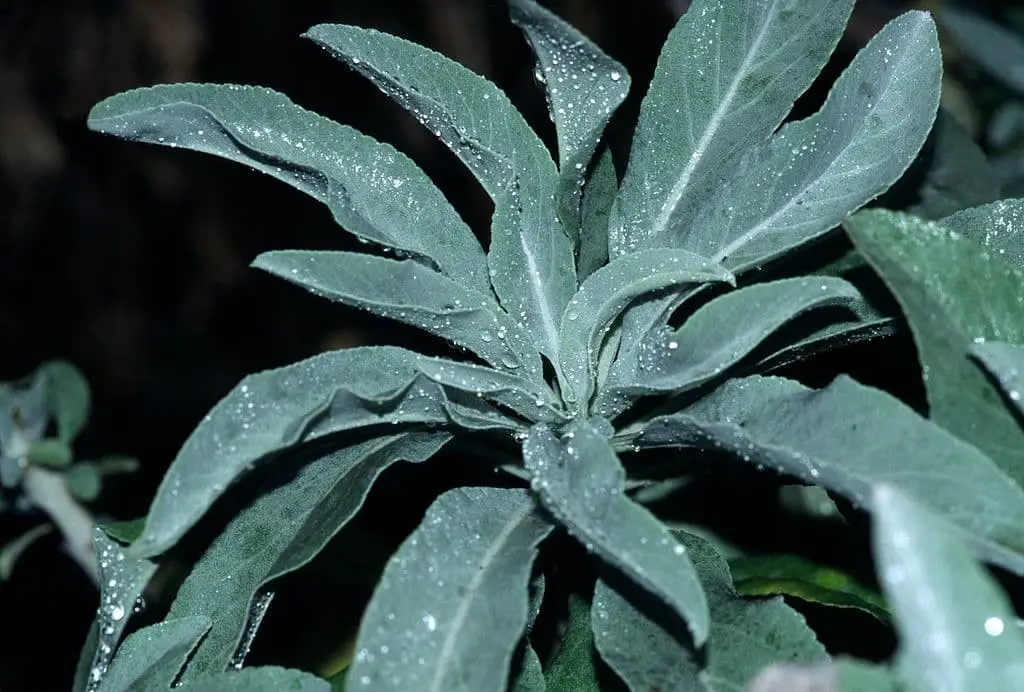
White sage, with its striking appearance, boasts a versatility that extends beyond mere aesthetics. Not only can its leaves be utilized in the culinary world – imparting a bold, peppery flavor to dishes like stuffing, sauces, and dressings – but they also hold a revered position in traditional medicine. Long held as a natural remedy for alleviating the symptoms of colds and other respiratory infections, this plant has been touted for its purported healing properties.
Woodland Sage (Salvia nemorosa)
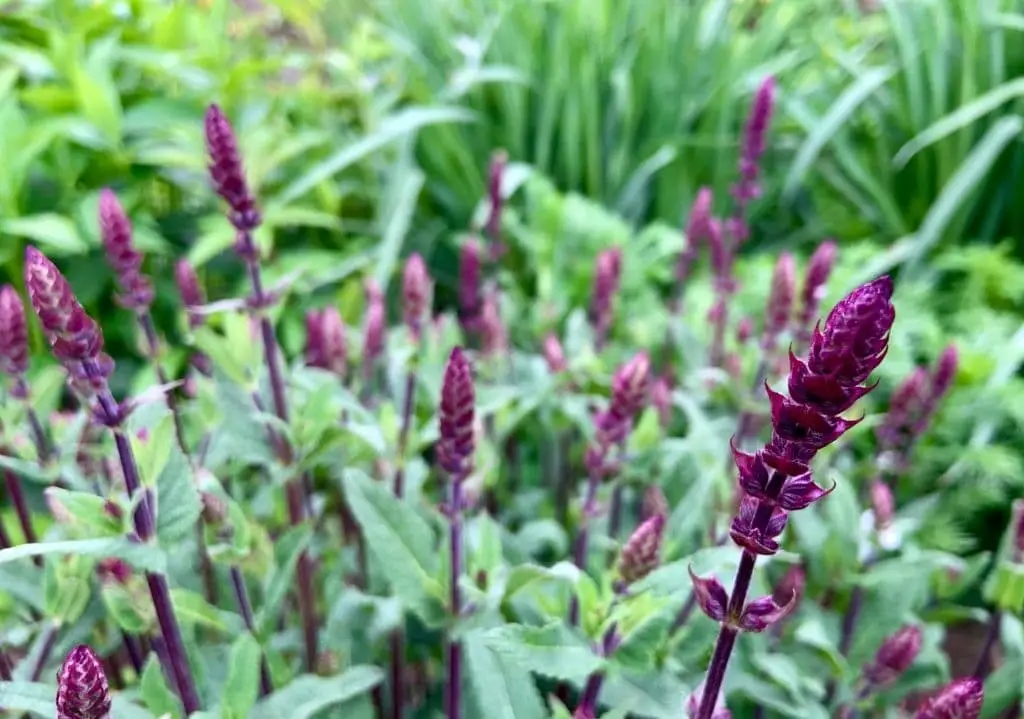
Woodland sage, with its striking gray-green leaves and fragrant purple flowers, is a versatile plant that offers a multitude of benefits in both the garden and the kitchen. Its delicate flavor makes it an excellent addition to various recipes, while its medicinal properties can help alleviate symptoms of colds and flus, boost immunity, and even reduce inflammation.
As a pollinator-friendly plant, woodland sage blooms throughout the warmer months, providing a valuable source of nectar for bees and butterflies from early summer to late fall.
FAQs
Does sage come back every year?
Sage’s resilience lies in its ability to return year after year as a perennial. This means that with proper care, you can expect this herb to regrow and flourish annually.
Are all types of sage edible?
While some varieties of sage are indeed edible and suitable for cooking, others serve a different purpose altogether. It’s essential to identify the specific type of sage you’re working with to avoid any potential misuses or misunderstandings.
Conclusion
Despite the ongoing need for further research, the available findings on sage plants are encouraging. Studies have discovered a range of benefits for human health that sage may also extend to plants. Although more investigation is required to fully grasp the impact of sage on plant growth, preliminary results hint at its potential as a valuable asset for promoting plant well-being. As you cultivate your garden, have you experimented with incorporating sage?
What experiences and observations do you have regarding its effects?
Related Posts
Looking to grow rosemary from scratch? Or perhaps you’re eager to start an indoor herb garden but aren’t sure where to begin? Whatever your goal, having a solid foundation is key. That’s why we’ve put together this easy guide on how to grow rosemary, as well as some valuable tips for starting and maintaining an indoor herb garden.
And if you’re looking for inspiration, we’ve also got some exciting information on Agastache hummingbird mint and 15 different types of cilantro, each with its own unique characteristics and uses. Plus, discover the amazing benefits and versatility of oregano in all its many forms. Whether you’re a seasoned gardener or just starting out, there’s something for everyone in this comprehensive resource.



